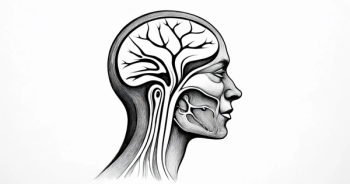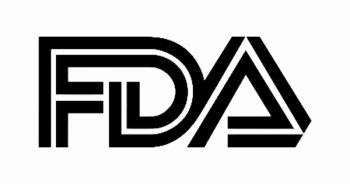
Peers & Perspectives in Oncology
- July 2025
Challenges Considered for Diagnosing Nasopharyngeal Cancer
During a live event, Deborah Wong, MD, PhD, discussed the role of EBV and challenges in nasopharyngeal cancer diagnosis with event participants.
Oncologists play a pivotal role in diagnosing and managing nasopharyngeal cancer (NPC). Deborah Wong, MD, PhD, led a discussion on the challenges and strategies in diagnosing and treating NPC at a virtual
DISCUSSION QUESTIONS
- What are the key challenges or barriers you face when diagnosing and staging NPC?
- Are there any additional diagnostic evaluations that might be helpful in determining a treatment plan for this patient?
- What factors do you consider when determining the initial treatment plan for a newly diagnosed patient with NPC, and how does EBV DNA impact your decision-making?
Rita Mukherjee, MD: The first challenge I usually face is getting them to an ENT [ear, nose, and throat] physician in a reasonable amount of time. Once we get the biopsy, then we can move forward with the concurrent plans, but that is my first hurdle that I face.
Albert Dekker, MD: I would agree. For me, it's very much about the same situation; the patient bouncing around with non-specific upper respiratory symptoms, congestion, and sinusitis [at] immediate care or urgent care. [They get a] course of antibiotics, etc. It takes a few months before they see the ENT physician.
Arati R. Chand, MD: What is the incidence of EBV positivity in NPC? If it's EBV negative, can it still be NPC, and how do you diagnose those types of patients with NPC?
Deborah Wong, MD, PhD: We do see EBV negative in NPC. Often, those are of the keratinizing SCC subtype. So certainly, although EBV positivity is very helpful in establishing a diagnosis of NPC, one can have NPC still based on location of the primary tumor and presence of local regional lymph node spread.
Mukherjee: Does the EBV positivity impact the prognosis or the response to treatment to certain agents?
Wong: It does.
Santhosh Ambika, MD: I also have had trouble with staging, especially stage 2, sometimes the ENT notes are not great because you know they don't see it often. Is MRI mandatory for staging in those cases? Do you do MRI? Does that help any? Or does a PET scan?
Wong: Often at our institution, we do end up getting both MRI and PET CT to assist with staging. Sometimes the PET CT, especially in the setting of sinusitis and things like that, can be a little bit difficult to delineate the areas involved. And so often for us, we do get both imaging modalities. What about in your practices?
Ambika: We are forced to get MRI. Is there a threshold for the EBV titer, since it's prognostic too—do the pretreatment levels matter, or is it the dynamics of the titer? How do you practice?
Wong: For us, it is helpful, both diagnostically as well as for monitoring. There are some data that indicate in addition to titers, the drop in titer can be very helpful prognostically.
John Y. Shin, MD: In my practice, I've had at least 2 cases where it was a diagnostic challenge for us because we weren't sure if this was a primary NPC that was invading into the oral pharynx, or a primary oral pharynx that was invading into the NPC space. So we've had some [issues]; I'm not sure if anyone else has encountered that.
Hyunseok Kang, MD, MPH: EBV fluorescence in situ hybridization is needed for the diagnosis of EBV positive in the primary pathology specimen. EBV DNA titer from the blood PCR is a different assay. Generally, we use 4000 IU/mL as a threshold for calling prognostic information, based on studies done in Hong Kong. But we have to remember that these PCR primers are different. All these studies done in Hong Kong use BamH1W primer, and if you use a different primer, the sensitivity and prognostic information can be different, so you have to be cognizant of which primer the lab used to when you order the PCR test.
Mukherjee: Is there any role for immunodeficiency or HIV screening in such patients?
Wong: Certainly, we think about it, but it's not something that I routinely check for in my practice.
Kang: With the EBV-induced tumors, the immunodeficiencies are more blood related, so EBV positive NPC is a very different subtype, so there's no special association with immunodeficiency with NPC.
Ambika: Do we know why it's more common in Asian patients? Because I saw an Asian patient who was EBV negative too. Is it an endemic situation? Or how do you explain that?
Wong: It does seem to be endemic, but yes, we can have EBV negative even in patients of Asian origin.
Kang: I don't know what your experiences are, but generally EBV-positive NPC is seen in people from Southeast Chinese descent. But I've also seen multiple people of Mediterranean heritage and some parts of Southeast Asia. I've seen some research done for HLA types associated with the predisposition to EBV-positive NPC, but I don't think there are any definite data behind it.
DISCLOSURES: Wong previously reported a consulting or advisory role with Bristol Myers Squibb, Genentech/Roche, Sanofi/Aventis, Blueprint Medicines, and Regeneron. There were no other known disclosures.








































